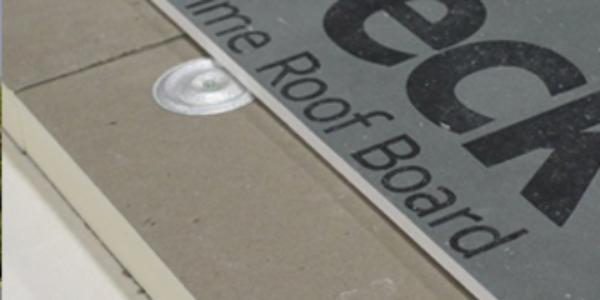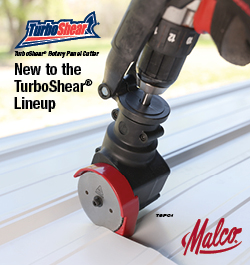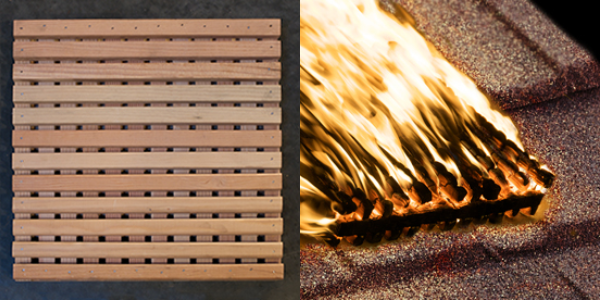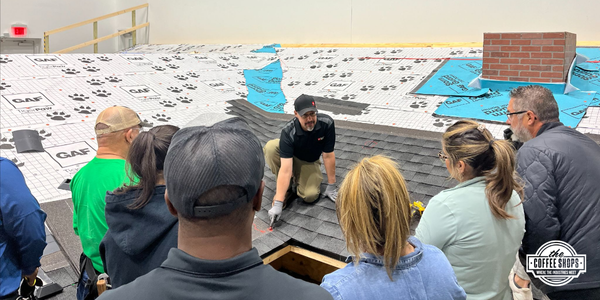The best practices for creating a hailstorm-ready roof – part two

By Mule-Hide.
From the heart of “hail alley,” Texas roofing contractor shares his tips for creating the best hail-proofed flat roof.
Each year, hailstorms damage roofs across the country, and many building owners struggle to protect their roofs from damage. While some places across the country only see hail once or twice a year, hail is a very common occurrence for those living in Central and Northern Texas, which has earned the nickname “hail alley.” Roofing contractors in this area have become accustomed to battling the damage hail leaves on flat roofs and Mule-Hide has gathered some valuable advice from local contractors that might help contractors better prepare for hailstorms.
Roofers nationwide get an up-close-and-personal look at the damage that a hailstorm can bring. And few get that view more often and more dramatically than those in Texas. As the heart of hail alley, the state has led the nation in the number of major hail events – with hailstones at least 1 inch in diameter – for the past eight years.
So, who better to share tips for creating a hail-resistant roof than one from the Lone Star state? In a recent post, Mike Anderson, general manager and commercial estimator at Clark Roofing in Waco, Texas, shared tips for choosing the right membrane, attachment method and adhesive for single-ply systems. In this post, he focuses on two other critical components – cover boards and accessories.
A protective cover board
Clark Roofing’s go-to single-ply membrane is 80-mil Standard TPO. A cover board installed between the insulation and the membrane helps protect both the membrane and the insulation, providing a stable and smooth surface for the membrane to adhere to and enhancing impact resistance. The type and thickness are determined by the attachment method and the hail rating desired.
In mechanically attached systems, Clark Roofing uses DensDeck® Roof Boards or Securock® Brand Gypsum-Fiber Roof Boards.
In fully adhered systems, using primed cover boards eliminates the need to apply a primer coat of adhesive to the substrate before applying the adhesive. To achieve a Moderate Hail rating (hailstones less than 1.75 inches in diameter) or Severe Hail rating (hailstones 1.75 inches to 2 inches in diameter), Clark Roofing specifies DensDeck Prime Roof Boards or Securock Brand Gypsum-Fiber Roof Boards. For a Very Severe Hail rating (hailstones greater than 2 inches in diameter), they opt for oriented strand board (OSB) with a ½-inch layer of poly ISO laminated to it; a bit more resilient than the other materials, it can absorb the added impact from the larger hailstones.
Clark Roofing crews use Helix® Max Low-Rise Adhesive from Mule-Hide Products to bond the cover board to the insulation. “It adheres better than any other low-rise foam adhesive we’ve used, and it’s properly mixed right out of the canisters,” Anderson said.
Accessories
Prefabricated accessories are the finishing touch in creating a polished, professional-looking roof, Anderson said.
“On every roof we do, we use factory-molded components – corners, patches, pipe boots, etc. – and we use TPO-coated edge metal whenever possible,” he explained. “We don’t cut anything. It creates a very tight, organized-looking roofing system. Many of our competitors fabricate and field-wrap their own accessories, and they end up being crooked, not installed correctly or loose. You see a big difference when you compare our roofs to theirs.”
Material costs are higher with this approach, Anderson admitted. But labor savings make up some of the difference, and the company’s detailed bid documents illustrate the value of the approach by clearly explaining what the customer will be getting and the resulting benefits.
While Texas may bear more than its share of hailstorms, virtually no corner of the United States is immune. Thoughtful planning in designing and installing a building’s roofing system can help ensure it will get through the storm unscathed.
Original article source: Mule-Hide
Learn more about MuleHide Products in their Coffee Shops Directory or visit www.mulehide.com.






















Comments
Leave a Reply
Have an account? Login to leave a comment!
Sign In